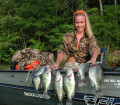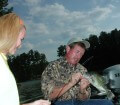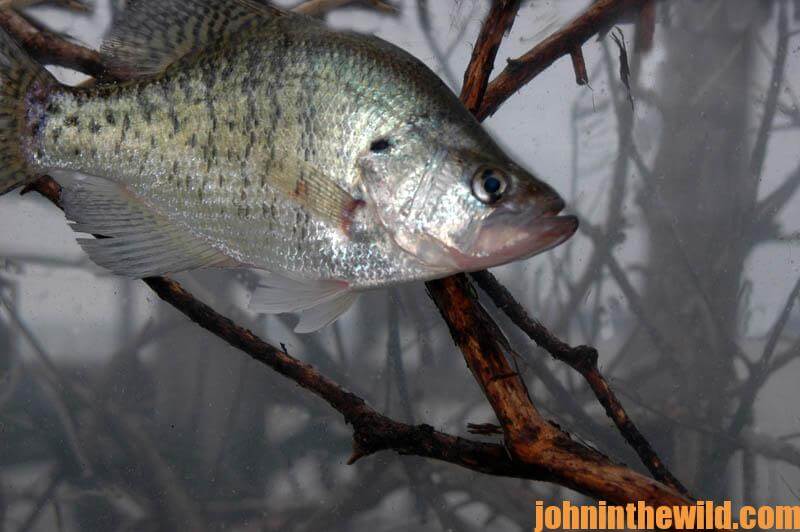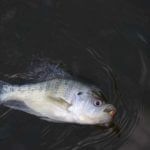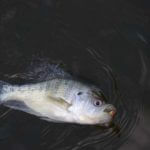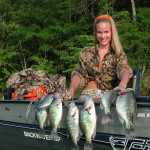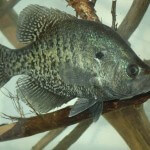John’s Note: Ken Cook quit his job as a fisheries biologist in 1983 to become a professional bass angler. The Oklahoma resident participated in a multitude of tournaments, including BASS and FLW events, for many years, staying on the water fishing for bass about 200 days a year. After retirement from his long career as a professional bass angler, he now has devoted his life efforts to making Tarbone Ranch in southwest Oklahoma a destination for others who share his passion for all things wild, offering a limited number of hunting and photographic safari opportunities for trophy game animals – deer, elk and bison. Cook still remains a consummate student of fish and their behavior.
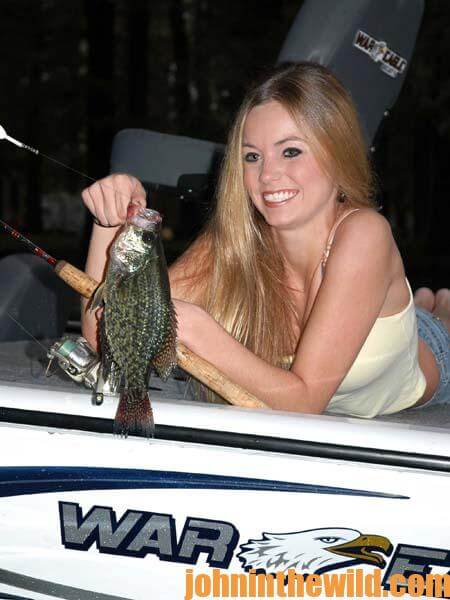 Even though there may not be as many crappie fishermen out on the lake during the hot summer months, generally there still are just as many bass fisherman as there are at most other times of the year. Bass fishermen know that crappie make tasty treats to take home for supper and can provide a lot of fun catching when the bigmouths become lockjawed. They’ve also learned that they can fish the same areas as they do for bass, and by downsizing their tackle, using ultralight rods and reels, making slower presentations, fishing little jigs in the same water and the same depth of water as they fish for the bass, they can catch crappie to eat. Often when bass fishing is slow, and the bass angler gets those little pecks on his line, he can convert over to crappie fishing and catch a good mess of slabs, even if the bass won’t hit. Then the anglers can take the crappie home to eat and still catch and release the bass.
Even though there may not be as many crappie fishermen out on the lake during the hot summer months, generally there still are just as many bass fisherman as there are at most other times of the year. Bass fishermen know that crappie make tasty treats to take home for supper and can provide a lot of fun catching when the bigmouths become lockjawed. They’ve also learned that they can fish the same areas as they do for bass, and by downsizing their tackle, using ultralight rods and reels, making slower presentations, fishing little jigs in the same water and the same depth of water as they fish for the bass, they can catch crappie to eat. Often when bass fishing is slow, and the bass angler gets those little pecks on his line, he can convert over to crappie fishing and catch a good mess of slabs, even if the bass won’t hit. Then the anglers can take the crappie home to eat and still catch and release the bass.
“Fishermen can eat crappie because crappie are such a prolific fish,” Ken Cook says. “In most lakes across the country, there are healthy crappie populations that can be harvested heavily each year without impacting the resource, because crappie can withstand much more fishing pressure than bass. In many parts of the nation crappie are so overpopulated that the fish’s growth becomes stunted. To prevent overpopulation and overharvesting of crappie, abide by the rules and regulations set by the Fisheries Departments in each state. State fisheries biologists know what they’re doing, and set seasons and bag limits for crappie on particular lakes to allow maximum harvest without impacting the resource adversely.”
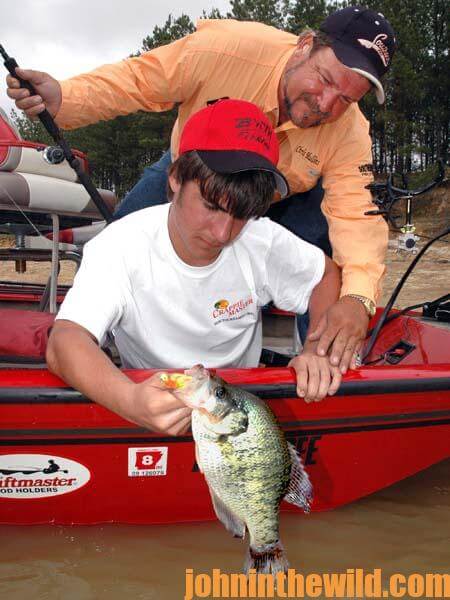 Cook believes that crappie fishing in the middle of the day during the summertime can provide a fun break for the bass angler who knows that midday fishing for largemouths can be tough. “I’ve never met a fish that I didn’t like, and crappie not only provide a fun tug on the line in the middle of the day, but they’re delicious eating fish and a good freezer stocker,” Cook says. “And although bass seem to be most active early and late during the hot summer months, crappie may feed three or four times a day and usually are more likely to be active in the middle of the day than the bass. So there’s no reason why the bass fisherman can’t return home with a mess of fish to eat if he uses his bass tactics to catch crappie when the bass aren’t biting.
Cook believes that crappie fishing in the middle of the day during the summertime can provide a fun break for the bass angler who knows that midday fishing for largemouths can be tough. “I’ve never met a fish that I didn’t like, and crappie not only provide a fun tug on the line in the middle of the day, but they’re delicious eating fish and a good freezer stocker,” Cook says. “And although bass seem to be most active early and late during the hot summer months, crappie may feed three or four times a day and usually are more likely to be active in the middle of the day than the bass. So there’s no reason why the bass fisherman can’t return home with a mess of fish to eat if he uses his bass tactics to catch crappie when the bass aren’t biting.
“Another advantage of using little jigs and minnows fished on light line in cover along the breaklines of major creek and river channels is that these baits will catch anything that swims. Just because you’re crappie fishing doesn’t mean you won’t catch catfish, bluegills, white bass, sauger or even hybrid striped bass. So, although you’re primarily fishing for crappie, you may take almost anything that swims.”
To learn much more about crappie fishing, get John E. Phillips’ Kindle eBooks and some print books, “Crappie: How to Catch Them Fall & Winter,” “Crappie: How to Catch Them Spring and Summer,” “Catch Crappie All Year” and “Catch Cold Water Crappie Now.” Click here to get these books. You also can download for free John and Denise Phillips’ “The Crappie Catcher’s Cookbook” here.

